Sonic relationality: building empathy with the critically endangered European eel in the Scheldt Estuary
This artistic research project aims to explore how and whether ecological sound art can be purposefully developed to forge meaningful connections between listeners and the aquatic environment. Focusing on the critically endangered European Eel in the Scheldt Estuary, the study adopts a practice-led, artistic approach to examine the concepts of multispecies storytelling, data-driven composition, and empathic listening.
Through sound-based artistic practice and qualitative methods, the project investigates the transformational potential of ecological sound art on listeners’ beliefs, perceptions, and emotions. Applying a hydrofeminist lens, it positions the eel as a locus for exploring broader interspecies relationships within marine ecosystems. The outcome of this study is to expand artistic understandings of how sonic practices can mediate our relationships with endangered marine life, contributing to a renewed perspective on their transformational potential.
Researcher: Lotte Nijsten
Supervisors: Katarzyna Ruchel-Stockmans (VUB); Free De Backer (VUB)
Dates: 2025-2029
Funded by Research Foundation of Flanders (FWO)
Visions from the North: The influence of Nordic architecture on the Belgian modern movement (1930-1980)
This project aims to examine how Belgian modernist architects encountered and perceived Nordic architecture and what impact this had on their own work between 1930 and 1980. First, it will examine the role of architectural education, magazines, study trips and exhibitions as vehicles of exchange. Then, it will study the actual influence of Nordic modernist architecture on Belgian architectural practice through a close analysis of selected public buildings, housing and religious buildings designed by prominent Belgian architects. Literature and archival research are combined with field studies in Belgium, Sweden, Denmark, Norway and Finland.
By elucidating how transnational exchanges have affected the modern built environment and shaped artistic production, this project aims to make significant contributions to the fields of architectural history, theory and heritage. At the same time, it will improve our understanding of 20th-century Belgian and Nordic culture and society at large.
Researcher: Jelrik Hupkes
Supervisors: Pieter Martens (VUB), Werner Adriaenssens (VUB)
Dates: 2025-2029
Funded by Research Foundation of Flanders (FWO)
Precarious Forms: A Study on the Aesthetics of Instability and Insecurity in Contemporary Art (1989–2019)
This project aims to explore the potential connections between the precariousness of form in contemporary art and the prevailing condition of instability and insecurity in society amidst globalization and neoliberal economic policies. The study focuses on the European artistic scene over the past three decades (1989-2019) and examines the concept of precarious form to investigate how artists reflect the fragile condition of creation and existence in the present world. The research takes a transdisciplinary approach, integrating Aesthetics, Art History, and Critical Theory, to analyze the interactions between the theme of precariousness and two essential dimensions of contemporary artistic practice: (I) the transience of the materiality and immateriality of the artistic object and (II) the representation of identities and subjectivities. The outcome of this study is to enhance understandings of the aesthetic use of precarious elements, contributing to a renewed perspective on one of the defining features of contemporary artistic creation: its instability of production, materiality, and representation.
Researcher: Felipe Xavier
Supervisors: Katarzyna Ruchel-Stockmans, Sonja Lavaert (VUB), and Margarida Brito Alves (NOVA University of Lisbon – School of Social Sciences and Humanities / IN2PAST)
Dates: 2024-2028
Bilateral cooperation within the framework of a joint doctoral project between VUB and NOVA University of Lisbon
Funded by EUTOPIA through the Portuguese Foundation for Science and Technology (FCT)
Curating through design: a decolonial practice orientated towards the future
The present research project examines a different kind of design exhibition than the mainstream exhibitions, called a curatorial work of design, where design is used as a discursive and radically relational framework within the curatorial narrative and the approach is to exhibit critical questions and create radically imaginative experiences. The research project contributes a new design curation theory about curatorial works of design to build a forum for debate on the future direction of curatorial practice that meaningfully engages with the critical potential of design.
The discourse on design exhibitions or curatorial works of design is rather limited as the curatorial discourse only focusses on art and does not look at practices outside of museums. The proposed research aims to combat this knowledge gap by analysing exhibitions through design inside and outside museums with 12 case studies from 1968 until now based on some of the most pressing socio-political topics.
The curatorial works of design are scrutinised on all aspects of the curatorial situation and its radical relationality: why, how, when and where the work of design has taken place and how it relates to society at large. All these components are then questioned through a decolonial lens to interrogate their modernist grounding. The culmination of these insights guides the new framework.
Researcher: Lisa Marie Sneijder
Supervisors: Katarzyna Ruchel-Stockmans; Laurens Dhaenens (LUCA/KU Leuven), Jane Tynan (Vrije Universiteit Amsterdam)
Dates: 2024-2028
Funded by Research Foundation of Flanders (FWO)
Flanders in Florence: Architectural Exchanges from North to South, 1400-1600
This project will be the first to investigate the role of ‘Le Fiandre’ for Florence’s architectural culture in the period 1400-1600. It does not argue for a marked Flemish influence on Florence’s Renaissance architecture but intends to study how the intense commercial, artistic, political and military ties with the Low Countries have enriched Florence’s broad architectural culture. While the impact of Flemish painting on Florentine art is well-studied, the transfer of architectural ideas, images, materials and techniques from Flanders to Florence remains a blind spot in scholarship on Renaissance Florence’s internationalism. The project analyses what Tuscan merchant-bankers working in Flanders wrote about its local manners of building and dwelling, and how they adorned their palaces in Florence with Flemish paintings, tapestries and luxury objects. It also examines how depictions in the admired Flemish paintings of a distinctly northern, gothic architecture were perceived in Florence, where most artists, patrons and architects ostensibly favoured a totally different all’antica style. And it studies the decoration of major Florentine buildings with Flemish black marble and stained glass and with painted battle scenes and cityscapes from the Low Countries. Assessing how all these aspects interacted and evolved will enhance our understanding of a vital chapter in Europe’s cultural history and elucidate also the (perceived) characteristics of ‘Flemish’ art and architecture.
Researcher: Caterina Cardamone, Alicia Rojas Costa
Supervisors: Pieter Martens; Gianluca Belli (Università degli Studi di Firenze)
Dates: 2024-2027
Funded by Research Foundation of Flanders (FWO)
Ingenious craftsmanship: a performative and art historical study of gold and silversmithing in sixteenth-century Antwerp
In the sixteenth century, Antwerp reached an artistic and commercial peak. The city became Europe’s epicenter of gold and silversmithing, thanks to the direct supply of raw materials through its harbor and the presence of wealthy merchants and skilled craftsmen. While Antwerp’s Golden Age is well studied, little research has been done on the art of gold and silversmithing or on the networks in which these luxury objects and their makers circulated, nor are their making processes and cross-craft exchanges fully understood.
Combining my skills as art historian, archaeologist and goldsmith, this research project aims to reveal the artisanal and technical gestures of the early modern gold and silversmith by employing an innovative research methodology known as Reconstruction, Replication and Reenactment (RRR). Focusing on ornamental cups, I will analyze and remake key parts of selected artefacts to distinguish exceptional manifestations of ingenuity from standard levels of craftsmanship. This will not only enrich our understanding of the materiality of the objects, but also of their social value and cultural significance. Connecting social and art historical studies of sixteenth-century Antwerp gold and silversmithing and infusing them with new insights about ingenuity and value, this project aims to write a cultural history of Antwerp ornamental cups from a maker’s perspective, while also offering a methodological test-case for future applications of RRR in related fields.
Researcher: Hanne Schonkeren
Supervisor: Pieter Martens; co-supervisors: Tine Meganck, Sven Dupré (Utrecht University)
Dates: 2022-2026
Funded by Research Foundation Flanders (FWO)
Let Me Tell You Something. An Intersectional and Decolonial Approach to Women Artists’ Appropriation of the Colonial Archive since the 1990s
Re-imag[in]ing the Landscape of the Anthropocene
In recent Western history, people have predominantly believed that humans occupy a special place in the Universe and have the (God-given) right to shape the environment according to their will and needs. This belief has culminated in the Anthropocene thesis adopted by Earth Scientists, recently claiming that 'we' - the human species - have become a 'force of nature' ourselves and have not only the power to shape the land we dwell on but alter the Earths' systems on a global scale. This universalizing discourse transforms us all into agents with equal responsibilities, and it is as much political as aesthetic.
This research project will analyze photography's role in conceptualizing and visualizing the landscape of this so-called 'Anthropocene.' It will also identify and analyze possible counter-narratives to the dominant rhetoric that have emerged in the wake of climate change and environmental injustice. The focus will lay on the various figurations this counter-narrative could come to encompass, ranging from a critique on Petrocapitalism, Multi-species environmental justice to Post-humanism and how they are embedded in the contemporary photographic practices.
Researcher: Katrien Verbeke
Promotor: Katarzyna Ruchel-Stockmans
Dates: 2021-now
Female European artists in the Société Anonyme and the interesting dynamic between Europe and the United States in the field of Modern Art in the 1920s
In 1920 the German American artist and art patron Katherine Dreier founded the Société Anonyme together with Marcel Duchamp and Man Ray, with a clear objective: introducing the American public to the new ‘modern’ art. This the Société Anonyme did by organizing exhibitions and a large number of lectures and by building an exceptional art collection which Dreier donated to the Yale University Art Gallery in 1941 and is still there today.
Several women artists were given significant attention and early recognition within the Société Anonyme. And an important number of innovative works by female avant-garde artist are still part of the collection today. In my well received master’s thesis I made a first analysis of the general motivation, mission and context of the Société Anonyme, and of three female artists that it presented: the Belgian artist Marthe Donas and the Austrian artists Erika Giovanna Klien ans Stefi Kiesler.
In my PhD I look more profoundly into the collection and into other continental female artists that got a platform within the Société Anonyme like Jacoba van Heemskerck, Maria Uhden, Liubov Popova, Ragnhild Keyser a.o. In the footsteps of the theories of art historians that worked on gender and avant-garde like Amelia Jones, Naomi Sawelson-Gorse, Ruth Hemus, Paula K. Kamenish and of the more general emancipatory and intersectional thinking of Donna Haraway, I seek to rewrite the art historical narratives of these female artists and put them and their work in a new light.
Researcher: Helke Smet
Supervisor: Katarzyna Ruchel-Stockmans
Dates: 2019-now
Designing for God and Mortals: Dom Martin Martin osb (1889–1965) and the Liturgical Applied Arts in Belgium from Art Deco to the Fifties (working title)
Silversmith-designer Dom Martin Martin osb (1889–1965) of Leuven’s Benedictine Keizersberg Abbey created some of the most quintessentially Art Deco design made in Europe during the 1920s–1940s. Inspired by the Liturgical Movement’s interest in contemporary arts and architecture in creating a fitting environment for the Roman Catholic liturgy, Martin strove to bring ecclesiastical applied arts to new heights. His calling card was an opulent aesthetic, visually stunning and colourful, combining calculated geometry with the most precious materials. To realise his artistic vision, Martin surrounded himself with specialist craftspeople and artists under the label La Croix Latine (1928–1939). Their work was exhibited at world fairs and retailed internationally, with commissions destined for Belgium and Congo, Canada, France, the Netherlands and Indonesia, Portugal and Brazil, the USA and even the Vatican.
This doctoral thesis (supervisor Prof. dr. Werner Adriaenssens) will shed new light on an under-researched area of European Art Deco design. Starting from Dom Martin’s artistic biography and an exhaustive oeuvre catalogue, Ko Goubert aims to present a critical case study of Martin’s work, and by extension of the position of contemporary ecclesiastical applied arts within the evolving liturgical and artistic landscapes of the interwar period in Belgium.
Researcher: Ko Goubert
Supervisor: Werner Adriaenssens
Dates: 2015-now
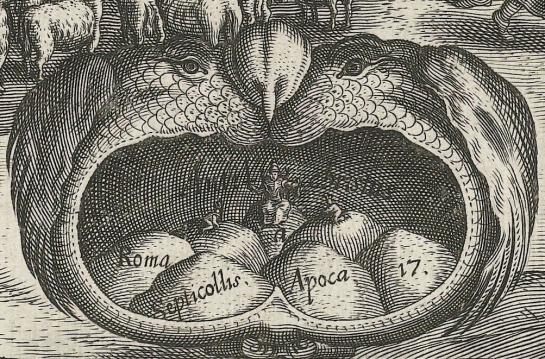
Teghenstellinghe. Prints and Religious Identity in the Low Countries (1555-1609)
As significant instruments in the dissemination of Protestant ideas, oral, visual, and written media affected early modern culture and its mentalities in an unprecedented way. Through word and image, religious oppositions (or Teghenstellinghe) were exacerbated in order to encourage the process of conversion. This research studies the specific way in which illustrated broadsheets contributed to the formation of religious identity in the Low Countries between 1555 and 1609. It focuses both on prints of a Protestant stripe as well as prints with a less pronounced religious orientation. The main objective is to analyze their active role in the formation of identity. Therefore, a thorough insight into how prints interacted with viewers is required. Prints will not be approached within the isolated framework of visual communication, but as embedded in a society in which the coexistence of oral, visual and written communication was a cornerstone of the dissemination of ideas. A comparative study of prints on the one hand, and a selection of sermons, rhetorician plays, and songs on the other hand, aims to reveal mutual cross-pollinations and divergences. Hence, the perspective of multi- and intermediality is used as a scientific window on early-modern prints, and their reception.
Researcher: Eva Janssens
Supervisor: Tine Meganck
Dates: 2014-now
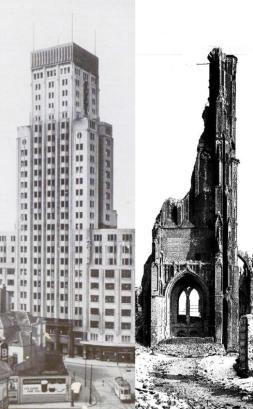
Allies in architecture? WWI and the Americanisation of Belgian Architecture (1914-1928)
In 1918, Belgian architects faced daunting challenges: an enormous task of postwar reconstruction and a nationwide lack of housing were aggravated by a catastrophic economic situation. American architecture arose as a source of inspiration. Globally known for its commercial drive, technical ambition and cost efficiency, it offered solutions to Belgium’s architectural crisis. This research proposal aims to explore how the Belgian architectural field welcomed or rejected this ‘Americanisation’ as a model for postwar reconstruction and innovation. It will examine how Belgian-American architectural collaboration arose during and after WWI, and how these collaborations had a more lasting impact on Belgian postwar architecture. The focus lies on the first decade after the war (19181928), with wartime friendships and alliances fresh. A broad network of actors with diverse goals is considered: individual architects, architectural associations, pressure groups, philanthropic foundations, politicians, contractors and investors. The scrutiny of contemporary manuscripts, plans, magazines, exhibitions and lectures will reveal how the encounter with American architecture forced Belgian architects to question and redefine their attitudes and practices in relation to similar evolutions elsewhere in Europe. Providing this answer will enrich Belgian architectural history, enhancing our understanding of the mechanisms at play in international architectural exchange.
Researcher: Tom Packet
Supervisor: Pieter Martens; co-supervisor: Werner Adriaenssens
Dates: 2020-2024
Funded by Research Foundation Flanders (FWO)
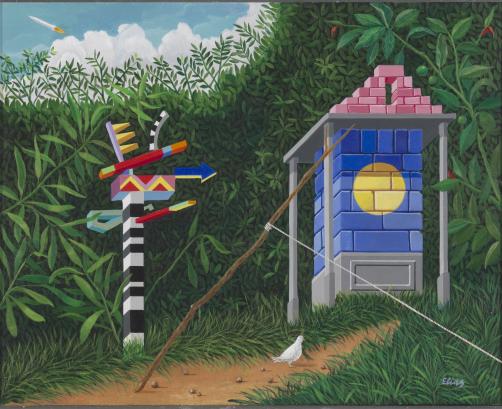
Sustainable yet forgotten. Rediscovering the contribution of the Belgian art networks to the second wave of environmentalism
Sustainable yet forgotten is an investigation that discovers the art practices and international networking of Belgian sustainable environmental art during the sixties until early eighties. In this period the second wave of environmentalism peaked. Contrasting the 19th century first wave, this movement saw nature not as the mystic antipode of manmade, rational, culture but as an important actor that influences and enforces our life in system-like environments. Multidisciplinary studies called for nature to be incorporated respectfully to create situations in which all involved benefit equally. Sustainable environmental art pictures these systems and exposes the danger that occurs when the milieu is neglected in a globalizing and modernizing world. Answering the question: What is the contribution of Belgian sustainable environmental art to the second wave of environmentalism, and how were their practises embedded in international art networks? provides new insights in how art was created, presented and positioned in the Western World.
Researcher: Senne Schraeyen
Supervisors: Inge Arteel, Katarzyna Ruchel-Stockmans
Dates: 2020-2024
Funded by Research Foundation Flanders (FWO)
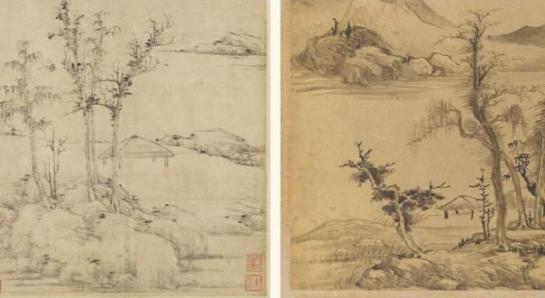
Copy, yet Original: Re-examining ‘fang Ni Zan’ paintings in the 15th - 17th centuries
Traditionally, Chinese painters favoured, and would be praised for, forming a link between contemporary work and classic paradigms. A typical example of this pursuit of antiquity is the ‘fang’ (artistic imitation) paintings omnipresent in the art of the Ming-Qing period. There is more to making a copy than imitating an original; there is more to quoting a commonly known style than paying tribute to the master. Through an investigation of the ‘fang’ paintings made in the style of the scholar-painter Ni Zan (130-1372) during the 15th-17th centuries, this study unravels the social meaning of a style, the changing perceptions of the same model in different historical contexts, and the role of ‘fang’ paintings in the evolution of style.
Researcher: Penny Xu Dan
Supervisors: Karin Nys; co-supervisor: Gao Mingly
Dates: 2017-2022
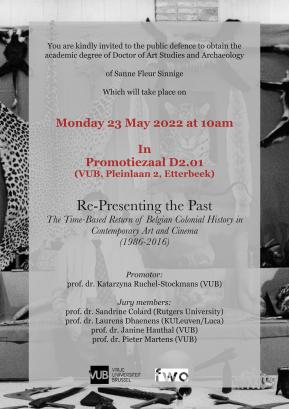
Camera and Colony: The Audiovisual Documentary Approach to the Historical Relation between the Congo and Belgium by Contemporary Artists and Filmmakers (1990-2016)
Camera and Colony will be the first PhD research project to explore an underdeveloped field in postcolonial research: The practice of contemporary artists and filmmakers active in Belgium, the Democratic Republic of Congo and other countries reflecting on the Belgian colonial past by means of appropriation and an activation of time based arts. Camera and Colony considers the possible role of appropriation in relation to temporal concerns evoked by the films and artworks. Unlike previous studies, Camera and Colony embraces the complexity of perspectives involved in the colonial past and the notion of an international contemporary art and film field, which results in a selection of works by artists and filmmakers such as Sammy Baloji, Monique Mbeka Phoba, Mathieu Kleyebe Abonnenc and Vincent Meessen.
Researcher: Sanne Fleur Sinnige
Supervisor: Katarzyna Ruchel-Stockmans
Dates: 2017-2021
Funded by Research Foundation Flanders (FWO)
